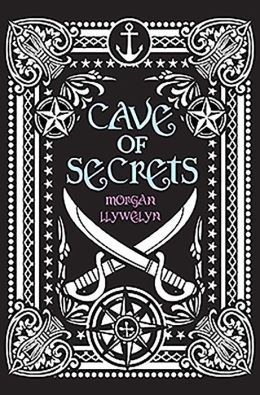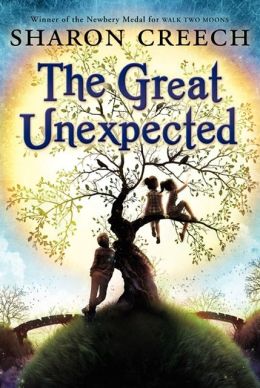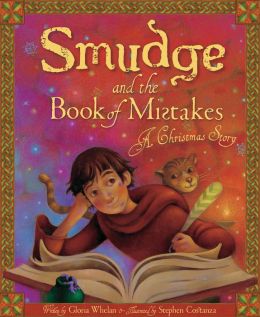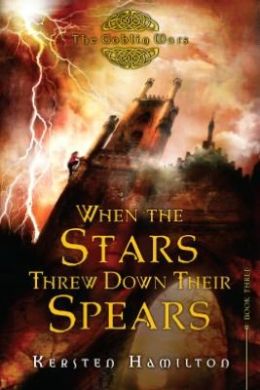 |
Ballywhinney Girl Eve Bunting Young Maeve and her grandfather are digging peat in a bog near their home when he unearths a body. The authorities are summoned; police procedures are followed; and archaeologists arrive and proclaim it to be young girl who has been buried and preserved there for probably thousands of years. Neighbors and media crowd around, but the focus is on Maeve and her reaction to these events. Bunting’s expressive free verse conveys Maeve’s “fear and curiosity, but there was more “–astonishment, concern, wonder, and sympathy. She struggles to understand who this girl might be and what had happened to her as the mummified body is taken away for tests and eventually displayed in a museum. Maeve is resolutely determined to have it be “our find,” as her excitement and awareness of the importance of the find slowly sinks in. Bunting’s descriptive, well-chosen words, such as “black as coal,” “thin as glass,” “ghost-like steps,” and “dead and dropped into this quiet place” bring images to mind and serve to accentuate McCully’s soft watercolor and ink illustrations. With muted and often haunting tones, they are expressive and detailed as they show events unfolding; we see the police car in the background, a camera in an onlooker’s hand, family photos in Maeve’s home, tears on Maeve’s face. Images of the mummy are respectful, with only the feet, hands, and arm occasionally showing until the museum display of the entire figure. Maeve poignantly places a rock on “the place where once she’d lain” and imagines “you may still see her there/walking on the bog she loved,” carrying “blue lupin and wild roses.” Bunting’s informative afterword discusses the science behind the story and the finding of over eighty mummified bodies like the fictional Ballywhinney Girl. Bunting and McCully’s collaboration shows the reverence and respect such discoveries deserve. Many school-age children will find this moving and fascinating; however, parents and teachers should consider the sensitivities of their children before sharing. It is an excellent alternative to books about Egyptian mummies and a good introduction to archaeology as well. 2012, Clarion/Houghton Mifflin Harcourt, Ages 7 to 10, $16.99. REVIEWER: Peg Glisson (Children’s Literature). ISBN: 9780547558431 |
 |
Boy 21 Matthew Quick Philadelphia is where Finley calls home, even though it is laden with Irish mob crime, some of which is family history, though most of it is skillfully hidden just below the surface, silently mixing with Finley’s performance on the basketball court, his obligations to his father and handicapped grandfather, and a dubious accident involving his girlfriend during basketball season. Quick has created a formidable character in Finley, someone readers can peel back the layers of to discover a benevolent and loyal high school senior whose moniker, White Rabbit, singles him out as the only white kid on the basketball team. Finley’s coach has asked him to befriend a new recruit, Russ, who is painstakingly recovering from the death of his parents, where Russ’s unusual coping mechanism has unsettled other players though Finley, while not ready to confess his mother’s death, questions their friendship when both play the same position. Yet, the altruistic tendencies Finley has for his family also play out as Russ takes center stage on the court pushing Finley to the sidelines. Necessary of course is a distraction that becomes a life-altering choice to leave the team when his girlfriend, Erin, mysteriously disappears after a career-ending injury that artfully brings Finley and his family full circle to their Irish mob beginnings. The quality of the story is reliant on Finley’s appeal which is quietly sentimental and compelling from his relentless basketball regimen to his mental game. Boys will identify with his sportsmanship and team and family commitments, but will need some encouragement to pick up the book with a quirky outer-space theme, while girls will sympathize with each character’s struggle to move beyond the past and create their future. 2012, Little Brown, Ages 12 to 18, $17.99. REVIEWER: Alicia Abdul (VOYA). ISBN: 9780316127974 |
 |
The Carrier of the Mark Leigh Fallon Fallon’s debut novel, first published on the HarperCollins online writing community inkpop.com and then selected for print, is a better-than-average offering that occasionally betrays its amateur roots with some uneven pacing. The setup is familiar and briskly handled: 17-year-old Megan Rosenberg has moved to Kinsale, Ireland, with her father after several unsettled years following the death of Megan’s mother. Megan fits right in with the popular crowd at her new school, but a broodingly handsome boy, Adam DeRís, keeps staring at her, and Megan stares right back, despite her friends’ warnings. Several chapters of teenage day-in-the-life narration ensue before Fallon suddenly dumps mysterious marks, elemental forces, and the Celtic goddess Danu into the mix, and the story takes off in a paranormal direction that the first third of the book has only hinted at. The intense, immediate romance between Megan and Adam remains the focus and the main draw. It’s an engaging story, heavy on the “snogging” and light on the mystical perils, from an author likely to improve with time. 2013, HarperTeen, Ages 13-up, $9.99. REVIEWER: Publishers Weekly (Publishers Weekly). ISBN: 9780062128003 |
 |
Cave of Secrets Morgan Llywelyn In the summer of 1639, thirteen-year-old Tom Flynn flees his father’s grand house in a fit of rebellion to explore the nearby caves on Roaringwater Bay, despite the rumors that these particular caves are home to Ireland’s nastiest pirates. Instead, Tom finds Donal and his family, who are, yes, smugglers, but who also warmly welcome Tom into their family and their illegal operations almost immediately. Meanwhile, the political chaos of Dublin in the mid-seventeenth century begins to encroach on Tom’s family’s estate, as his father finds himself embroiled in the beginnings of the English Civil War and a Protestant lord threatens to take over the Catholic Flynn family’s land unless Tom and his new comrades can stop him. History buffs keen on details will find this novel by celebrated Irish author Llywelyn a treasure trove of information, both in the descriptions of everyday life along the Irish coast and in the portrayal of the Irish/English conflict, the pre-war English parliamentary upheaval, and Tom’s father’s desperate situation. Contextual clues allow even young readers who have no concept of Ireland’s history to understand the basics of the unruly political landscape, while the domestic drama of Tom’s efforts to gain his father’s approval is nicely balanced against the historical backdrop. A few scenes of Tom’s derring-do while helping his new friends smuggle gold add a bit of a thrill, but this is not so much a story of swashbuckling adventure on the high seas as it is a satisfying tale of a boy struggling to find a proper family. Review Code: R — Recommended. 2013, O’Brien, Grades 5-8, $12.95. REVIEWER: Kate Quealy-Gainer (The Bulletin of the Center for Children’s Books). ISBN: 9781847172075 |
 |
Gold Talia Vance This sequel to Silver (Flux/Llewellyn, 2012) opens with a war brewing between the old Irish gods and the descendants of the humans who exiled them. Brianna Paxton, a witch and the descendant of the goddess Danu, is caught in the middle. She feels no particular loyalty to either side, especially since both want to use her to their own advantage. To make matters more confusing, Brianna is attracted to men on both sides: Blake, a Son of Killian, and Austin/Arawn, the god of the underworld. While it is not too hard to pick up the story line, readers would benefit from reading the first book, especially if they want to understand the relationships between the characters and their supernatural affiliations. Narrative jumps between past, present, and future slow the plot and make it a little difficult to track, although the time-travel sequences hint at Brianna and Austin’s eventual destiny. The first-person narrative is strong, if a bit distant, and the chemistry between Brianna and Austin packs some heat. The ending leaves things open for another installment. Teens looking for another paranormal love triangle and fans of the first book will like this. Sexual situations and violence may make it more appropriate for public libraries and high schools than for middle or junior high schools. 2013, Flux/Llewellyn, Ages 15 to 18, $9.99 REVIEWER: Brenna Shanks (VOYA). ISBN: 9780738734712 |
 |
The Great Unexpected Sharon Creech In a story that is part folktale, part mystery, and part comedy, Newbery Medalist Creech (Walk Two Moons) traces a series of strange events, beginning with a boy’s fall from a tree, which is witnessed by an orphan named Naomi and her friend Lizzie. The boy, Finn, might be part of the Dimmens clan, who live up on Black Dog Night Hill, or his appearance might be more ethereal in nature. In alternating chapters, readers are whisked between two evocative locations: Naomi’s town of Blackbird Tree and an impressive Irish estate owned by an ailing mystery novel buff. Neighbors, strangers, and a collection of odd artifacts are all part of a puzzle Naomi tries to solve-and readers will be working just as hard to do so. The fun that drives the book forward derives from Naomi’s plainspoken narration (her barely concealed jealousy over Lizzie’s interactions with Finn is especially well-done), along with uncovering the surprising connections between characters and wondering whether magic is at the root of the baffling occurrences. 2012, Joanna Cotler Books / HarperCollins, Ages 8-12, $16.99. REVIEWER: Publishers Weekly (Publishers Weekly). ISBN: 9780061892325 |
 |
A Greyhound of a Girl Roddy Doyle Twelve-year-old Mary and her mother are both dealing with the impending death of Mary’s Granny when Mary encounters an unusual woman on the street near her home. She soon discovers that woman is the ghost of her great-grandmother, Tansey, who wants to get a message to her daughter, Mary’s Granny, to ease her passage out of life. All four generations of women and girls–Mary, her mother Scarlett, her Granny Elmer, and Tansey are the subject of Roddy Doyle’s unusual and immensely comforting ghost story. The narrative moves back and forth among their lives, with an emphasis on each one’s childhood experiences and mother/daughter bonds. Each is a lively, funny, distinctive character, with the shared moments of humor when they are together full of warmth and delight. Doyle’s story, with its wonderful dialogue, culminates in a road trip as the quartet heads out of Dublin into the Irish countryside in the middle of the night, toward the homestead they haven’t seen in years. They are a ghost, a dying woman, a middle-aged woman, and a girl. They are mothers and daughters. They are family. And in the end, that is what Mary and her mother have when Granny dies knowledge of family, and the love that binds them all. 2012, Amulet / Abrams, Age 11 and older, $16.95. REVIEWERS: CCBC (Cooperative Children’s Book Center Choices, 2013). ISBN: 9781419701689 |
 |
Smudge and the Book of Mistakes: A Christmas Story Gloria Whelan Illustrated by Stephen Costanza It was during a cold winter in Ireland in the Middle Ages that Cuthbert was sent to the monastery to live with the monks because his father could no longer tolerate his behavior of giving up. Cuthbert would not devote any time to practice of anything that he did not get right the first time. Cuthbert gave up on riding a horse because he fell off the first time he tried. He gave up on archery because on his first try his arrows missed the target. Cuthbert arrived at the monastery of St. Ambrose at the age of fifteen, a pale, skinny boy who was clumsy and ill-equipped to be of any help to the monks. However, the monks would not give up on him and they continued to find him a place in the kitchen or the choir or the sewing room. When they finally tried to provide Cuthbert a skill by putting him in the scriptorium where the lettering was done, Cuthbert was happy. He loved working with the letters and seeing the stories that letters could tell. Still, Cuthbert would not practice his letters and he was always getting smudges on the parchment. The monks began to call him Smudge. When the old Father Abbot decides to produce a manuscript of the Christmas story that would be praised far and wide because of the beautiful script and illustrations that the monks would provide, excitement abounds among the monks. The abbot has chosen the monastery’s Brother Gregory to provide the illustrations but the script will be done by Cuthbert, due to the faulty hearing and stubborn nature of the abbot. Cuthbert will finally learn that mistakes are the only the beginning of great learning and accomplishments. This is a delightful story that will impress young children with the character of perseverance and emphasize the need for self-confidence. The setting of the Middle Ages also serves as an introduction to the period and practices for the middle level reader. Although the title suggests this is a Christmas book, the story and descriptions have a much wider scope.2012, Sleeping Bear Press, 48 pp., $17.95. Category: Picture book. Ages 8 to 11 REVIEWER: Joyce Rice (Children’s Literature). ISBN: 9781585364831 |
 |
Tracks Diane L. Wilson Diane Lee Wilson’s beautifully descriptive prose tells the story of Malachy Gormley, thirteen year old son of an Irish immigrant, who has traveled through Panama to Sacramento to earn money for his family by helping build the first transcontinental railroad. When he arrives, he finds a bulldog, Brina, who becomes his constant companion. The entire story is told through Malachy’s eyes — the wonder and the awe of California and the mountains, the brutal working conditions, and temptations of the railroad camp. Malachy’s primary job is to accompany a horse, Blind Thomas, to and from the mountain tunnel worksite carrying rubble. The danger inherent in this work, especially the blasting, becomes obvious to Malachy not in the actual explosions, but in the aftermath–the injuries he sees in other workers. Malachy’s team works alongside a Chinese group. Wilson portrays this other culture through the perspective of a typical person at that time. The Chinese are perceived as a different group of people with strange habits of bathing daily, constantly drinking tea, and smoking opium. There is one particular young Chinese man who stands out to Malachy; he calls him Duck. Duck speaks out for his group, and organizes a strike when the Chinese are not paid fairly. Malachy is a fully developed, very believable character. He makes lots of mistakes, loses his paycheck in gambling, and eventually steals money from the railroad company, and allows the railroad to believe Duck was responsible. It is his guilt that drives much of his later decisions–for the good or bad. His story follows the building of the railroad, ending (or just beginning) with the completion of the link from the East to the West. Malachy’s relationships with his animals, the men in his company, and Duck, all evolve as he grows up. The writing is superb, with evocative passages which take the reader immediately into the time and place of the railroad. An author’s note completes the book offering a perspective on immigration and historical facts. Recommended for grades 5-9. 2012, Margaret K. McElderry/Simon & Schuster, Ages 10 to 15, $16.99. REVIEWER: Kristine Wildner (Catholic Library World). ISBN: 9781442420137 (hardcover) |
 |
When the Stars Threw Down Their Stars K. R. Hamilton Book Three opens with Tea and Finn standing over Kyle’s body just as the police arrive at the high school. Tea quickly binds Kyle to Isabeau, and Finn’s iron knife sends them both back to Mag Mell before Officer Fiorella opens the classroom door. The death of Mab’s son only underscores Tea’s vow to declare war on the fairy queen, but victory will come at a tragic price. Meanwhile, Raynor’s angelic powers incinerate the park to seal the doorway to Mag Mell but dark creatures have already breached the gate near the library. Finn and Tea arrive home to see Dump Dogs eating Maggot Cat’s carcass on Tea’s doorstep. Mamieo dies trying to save Aiden and Tea’s dad, who holds the dark forces at bay with a song while Tea, Aiden, and Finn steal back into Mag Mell to finish off Mab and restore the realm. This book begins with a bang, mercilessly throwing the reader back into the action before proceeding at a slow simmer until the chilling climax. Mag Mell’s villains are vicious and cruel. Both Mamieo’s and Mr. Wylltson’s deaths occur unexpectedly, leaving Tea and Aiden stunned just as they must prepare to battle Mab’s darkest minions. The main characters are realistic and engaging but the plethora of minor characters may require some review. Although librarians will applaud the multitude of literary allusions, they may be lost on most teens. This final battle and ultimate victory provide a very satisfying end to the trilogy. 2013, Clarion/Houghton Mifflin Harcourt, Ages 11 to 18, $16.99. REVIEWER: Nancy K. Wallace (VOYA). ISBN: 9780547739649 |
Irish
 |
Who are the Irish? Historian Carl Wittke described them as having a “temperament [that] is a mixture of flaming ego, hot temper, stubbornness, great personal charm and warmth, and a wit that shines through adversity. An irrepressible buoyancy, a vivacious spirit, a kindliness and tolerance for the common frailties… ” Watch for some of these characteristics in these books. Web links to additional information and activities about the Irish follow these reviews. Contributor: Peg Glisson |
Reviews
|



